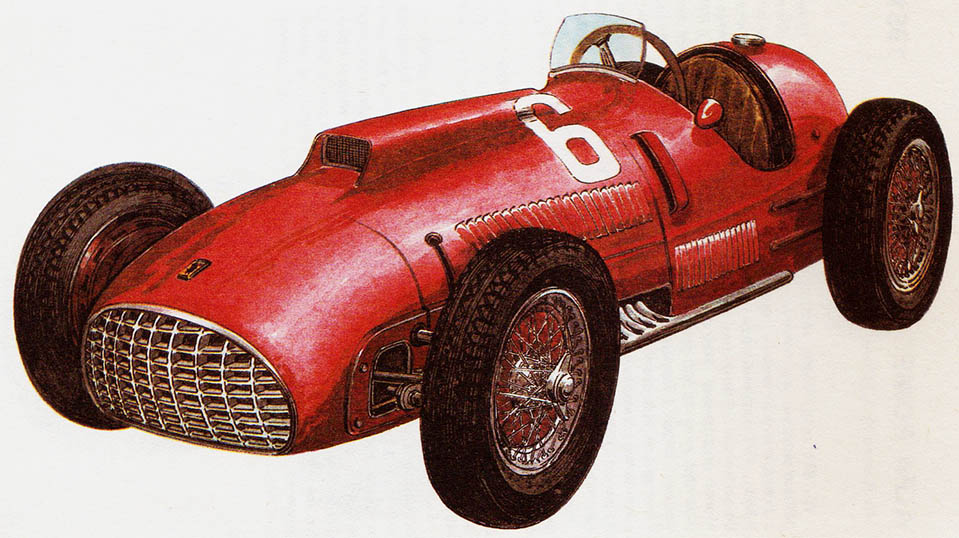FERRARI 375 – year 1951
Car Ferrari Construction, Modena, Italy.
In the season 1950 Alfa Romeo definitely dominated. Eleven victories out of eleven starts contributed to building this conviction, that model 159 it is unrivaled. However, competitors "did not fall asleep pears in the ashes” and for the other half 1950 of the year, Ferrari has already prepared a new model with a 4.5-liter engine without a compressor. It was constructed by Eng. Aurelio Lampredi, successor of Eng. Colombo. Lampredi took the de Dion type rear axle out of the past, which sprung on a transverse six-leaf semi-elliptical spring. Reactive longitudinal bars were used to transfer longitudinal forces. The rear wheels were driven via cardan shafts. The front wheels were suspended on transverse trapezoidal wishbones, the lower parts of which formed a transverse leaf spring. Hydraulic shock absorbers were used to dampen vibrations. The car was already equipped with hydraulic dual-line brakes. The rectangular frame was made of oval tubes with crossbars and brackets.

Car Ferrari Construction, Modena, Italy.
In the first versions of the year 1950 engine displacement was gradually increased from 3300 cm3 through 4100 cm3 do 4498 cm3 (∅ 80 x 74,5 mm). In the last version with a compression ratio 14,5 : 1 the engine was running 279,7 kW (380 KM) by 7500 RPM. The concept of the vehicle was consistent with the type 125, i.e. the car had a V-twelve-cylinder engine with a 60 ° fork. The light alloy cylinder heads each had one larger intake valve and one smaller exhaust valve. The cam shafts were chain driven. The crankshaft rotated in seven thin-walled, triple-layer Vanderwell plain bearings. Ignition 24 the candles came from two Marelli sparkers. Fuel pumps were also doubled, connected in series. The fuel-air mixture was prepared in three double Weber rainbows. The four-speed gearbox was locked with the differential under the driver's seat.
The empty vehicle weighed 720 kg. On the other hand, the overall weight was 1040 kg. Speed car 300 km / h was an equal partner for compressor vehicles 1,5 liters. In 1951, Alberto Ascari won two Grand Prix awards for Ferrari: in Germany at the Nurburgring track (134,1 km/h) and in Italy in Monza (184,8 km/h). The third victory for Scuderia Ferrari was won by Froilan Gonzales in the England Grand Prix (153,8 km/h).